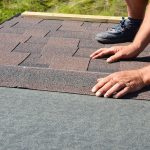It’s one of the truths of life that it’s always easier to take care of something than to wait for it to break and then fix it. This is especially true of roofs. People tend to forget about their roof—out of sight, out of mind, but there is a lot going on up there. Wind, rain, hail, debris—all are hitting your roof on a fairly regular basis and doing damage, sometimes almost imperceptible damage, to your roof. If you want your roof to last a long time, maintenance is a key component to your roof’s success.
Roof Inspection
Maintenance begins with a thorough inspection. In a roof inspection, a professional will go over every inch of the roof, looking for both minor and major problems. With regular inspections, minor problems are often found early enough to be taken care of as part of standard maintenance and not require a major repair.
Roof Problems
Some problems that may turn up during a roof inspection might include natural deterioration and splitting in flashing, shingles or other roofing material, loose flashing or shingles, and accumulations of dirt and debris on the roof. More serious problems might include missing shingles, collapsed sections of the roof or areas where debris has actually punctured the roofing material. In the most serious of cases, it may be too late for maintenance and the roof may need to be replaced. If you completely ignore problems with your roof, water will begin to leak into your home and you will not only have to repair or replace the roof, but also repair or replace parts of the interior of your home and possibly deal with mold removal issues as well.
Roof Maintenance
After the inspection, the next major part of roof maintenance is a thorough cleaning. Dirt, leaves, twigs and even dead insects can clog gutters, force their way into cracks and crevices in a roof or even wedge their way in between flashing and other roofing materials, widening the gap and causing problems. Once all of these potential problems are cleaned away the next thing to do is repair minor damage, replacing cracked shingles or flashing, caulking around seams, and patching any areas that may need it. When all of this is done, the roof should once again be solid and ready to face many more months of nature’s onslaught.








